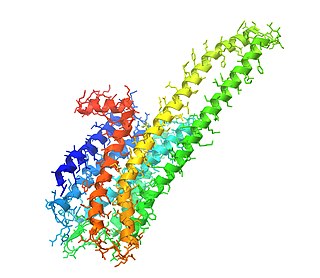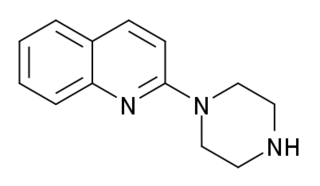Related Research Articles

Lysergic acid diethylamide, commonly known as LSD, and known colloquially as acid or lucy, is a potent psychedelic drug. Effects typically include intensified thoughts, emotions, and sensory perception. At sufficiently high dosages, LSD manifests primarily mental, visual, and auditory hallucinations. Dilated pupils, increased blood pressure, and increased body temperature are typical.

Psychedelics are a subclass of hallucinogenic drugs whose primary effect is to trigger non-ordinary mental states and a perceived "expansion of consciousness". Also referred to as classic hallucinogens or serotonergic hallucinogens, the term psychedelic is sometimes used more broadly to include various types of hallucinogens, such as those which are atypical or adjacent to psychedelia like salvia and MDMA, respectively.
A psychedelic experience is a temporary altered state of consciousness induced by the consumption of a psychedelic substance. For example, an acid trip is a psychedelic experience brought on by the use of LSD, while a mushroom trip is a psychedelic experience brought on by the use of psilocybin. Psychedelic experiences feature alterations in normal perception such as visual distortions and a subjective loss of self-identity, sometimes interpreted as mystical experiences. Psychedelic experiences lack predictability, as they can range from being highly pleasurable to frightening. The outcome of a psychedelic experience is heavily influenced by the person's mood, personality, expectations, and environment.

Amides of lysergic acid are collectively known as lysergamides, and include a number of compounds with potent agonist and/or antagonist activity at various serotonin and dopamine receptors. Lysergamides contain an embedded tryptamine structure, and as a result can produce similar, often psychedelic, effects to those of the true tryptamines.
Neuroplasticity, also known as neural plasticity or brain plasticity, is the ability of neural networks in the brain to change through growth and reorganization. It is when the brain is rewired to function in some way that differs from how it previously functioned. These changes range from individual neuron pathways making new connections, to systematic adjustments like cortical remapping or neural oscillation. Other forms of neuroplasticity include homologous area adaptation, cross modal reassignment, map expansion, and compensatory masquerade. Examples of neuroplasticity include circuit and network changes that result from learning a new ability, information acquisition, environmental influences, pregnancy, caloric intake, practice/training, and psychological stress.

The 5-HT2A receptor is a subtype of the 5-HT2 receptor that belongs to the serotonin receptor family and is a G protein-coupled receptor (GPCR). The 5-HT2A receptor is a cell surface receptor, but has several intracellular locations.

A serotonin receptor agonist is an agonist of one or more serotonin receptors. They activate serotonin receptors in a manner similar to that of serotonin, a neurotransmitter and hormone and the endogenous ligand of the serotonin receptors.

Carolyn Ruth Bertozzi is an American chemist and Nobel laureate, known for her wide-ranging work spanning both chemistry and biology. She coined the term "bioorthogonal chemistry" for chemical reactions compatible with living systems. Her recent efforts include synthesis of chemical tools to study cell surface sugars called glycans and how they affect diseases such as cancer, inflammation, and viral infections like COVID-19. At Stanford University, she holds the Anne T. and Robert M. Bass Professorship in the School of Humanities and Sciences. Bertozzi is also an Investigator at the Howard Hughes Medical Institute (HHMI) and is the former director of the Molecular Foundry, a nanoscience research center at Lawrence Berkeley National Laboratory.

Quipazine is a serotonergic drug of the piperazine group which is used in scientific research. It was originally intended as an antidepressant but never developed for medical use.
Hallucinogens are a large and diverse class of psychoactive drugs that can produce altered states of consciousness characterized by major alterations in thought, mood, and perception as well as other changes. Most hallucinogens can be categorized as either being psychedelics, dissociatives, or deliriants.

David Ruchien Liu is an American molecular biologist and chemist. He is Richard Merkin Professor, Director of the Merkin Institute of Transformative Technologies in Healthcare, and Vice-Chair of the Faculty at the Broad Institute of Harvard University and the Massachusetts Institute of Technology.

25CN-NBOH is a compound indirectly derived from the phenethylamine series of hallucinogens, which was discovered in 2014 at the University of Copenhagen. This compound is notable as one of the most selective agonist ligands for the 5-HT2A receptor yet discovered, with a pKi of 8.88 at the human 5-HT2A receptor and with 100x selectivity for 5-HT2A over 5-HT2C, and 46x selectivity for 5-HT2A over 5-HT2B. A tritiated version of 25CN-NBOH has also been accessed and used for more detailed investigations of the binding to 5-HT2 receptors and autoradiography.
Iboga-type alkaloids are a set of monoterpene indole alkaloids comprising naturally occurring compounds found in Tabernanthe and Tabernaemontana, as well as synthetic structural analogs. Naturally occurring iboga-type alkaloids include ibogamine, ibogaine, tabernanthine, and other substituted ibogamines. Many iboga-type alkaloids display biological activities such as cardiac toxicity and psychoactive effects, and some have been studied as potential treatments for drug addiction.

Tabernanthalog (TBG) is a novel water-soluble, non-toxic azepinoindole analog of the psychoactive drug ibogaine first synthesized by Professor David E. Olson at UC Davis.

AAZ-A-154 is a novel isotryptamine derivative which acts as a 5-HT2A receptor agonist discovered and synthesized by the lab of Professor David E. Olson at UCDavis. Animal studies suggest that it produces antidepressant effects without the psychedelic action typical of drugs from this class. In tests, AAZ-A-154 had antidepressant effects in mice without causing the head-twitch response linked to hallucinogenic effects. Due to the rapidly-induced and enduring neuroplasticity, AAZ-A-154 is a member of the class of compounds known as non-hallucinogenic psychoplastogens. This compound, as well as related compounds, are licensed by Delix Therapeutics and are being developed as potential medicines for neuropsychiatric disorders.
Psychoplastogens are a group of small molecule drugs that produce rapid and sustained effects on neuronal structure and function, intended to manifest therapeutic benefit after a single administration. Several existing psychoplastogens have been identified and their therapeutic effects demonstrated; several are presently at various stages of development as medications including ketamine, MDMA, scopolamine, and the serotonergic psychedelics, including LSD, psilocin, DMT, and 5-MeO-DMT. Compounds of this sort are being explored as therapeutics for a variety of brain disorders including depression, addiction, and PTSD. The ability to rapidly promote neuronal changes via mechanisms of neuroplasticity was recently discovered as the common therapeutic activity and mechanism of action.
Delix Therapeutics is an American biotech company based in Boston, Massachusetts. The company develops novel neuroplasticity-promoting therapeutics for central nervous system (CNS) diseases such as depression and post-traumatic stress disorder (PTSD). It was co-founded in 2019 by David E. Olson and Nick Haft.

6-Fluoro-DET is a substituted tryptamine derivative related to drugs such as DET and 5-fluoro-DET. It acts as a partial agonist at the 5-HT2A receptor, but while it produces similar physiological effects to psychedelic drugs, it does not appear to produce psychedelic effects itself even at high doses. For this reason it saw some use as an active placebo in early clinical trials of psychedelic drugs but was regarded as having little use otherwise, though more recent research into compounds such as AL-34662, TBG and AAZ-A-154 has shown that these kind of non-psychedelic 5-HT2A agonists can have various useful applications.
Lin Tian is a Chinese-American neuroscientist and biochemist. She is a Scientific Director of the Max Planck Florida Institute for Neuroscience in Jupiter, FL, and was formerly a professor in the Department of Biochemistry and Molecular Medicine at the University of California, Davis. Tian is known for her research in the fields of neuroscience and biochemical engineering. She develops and applies molecular tools to understand brain function and dysfunction at the individual, neuronal level.
References
- 1 2 Marrush, Najwa (2017-07-27). "David E. Olson, Ph.D." UC Davis Center for Neuroscience. Retrieved 2022-08-30.
- ↑ "David E. Olson | Chemistry". 13 June 2017.
- ↑ "David E. Olson, Ph.D. | UC Davis Department of Biochemistry and Molecular Medicine".
- ↑ https://neurotherapeutics.ucdavis.edu/ [ bare URL ]
- ↑ Yakowicz, Will. "Delix Therapeutics Pursues A Psychedelic-Inspired Medicine Without The Trip". Forbes. Retrieved 2022-08-30.
- ↑ Smith, Dana G. (2022-07-15). "Opinion | Taking the Magic Out of Magic Mushrooms". The New York Times. ISSN 0362-4331 . Retrieved 2022-08-30.
- ↑ Olson, David E.; Maruniak, Autumn; Malhotra, Sushant; Trost, Barry M.; Du Bois, J. (July 2011). "Synthesis and Reactivity of Unique Heterocyclic Structures en Route to Substituted Diamines". Organic Letters. 13 (13): 3336–3339. doi:10.1021/ol2010769. PMC 3123413 . PMID 21618989.[ non-primary source needed ]
- ↑ Olson, David E.; Sleiman, Sama F.; Bourassa, Megan W.; Wagner, Florence F.; Gale, Jennifer P.; Zhang, Yan-Ling; Ratan, Rajiv R.; Holson, Edward B. (April 2015). "Hydroxamate-Based Histone Deacetylase Inhibitors Can Protect Neurons from Oxidative Stress via a Histone Deacetylase-Independent Catalase-Like Mechanism". Chemistry & Biology. 22 (4): 439–445. doi:10.1016/j.chembiol.2015.03.014. PMC 4562013 . PMID 25892200.[ non-primary source needed ]
- ↑ "Leadership". UC DAVIS MEMORY AND PLASTICITY PROGRAM. Retrieved 2021-08-27.
- ↑ Yakowicz, Will. "Delix Therapeutics Pursues A Psychedelic-Inspired Medicine Without The Trip". Forbes. Retrieved 2022-06-09.
- ↑ LaHucik, Kyle (2021-09-27). "Delix raises $70M to test psychedelic analogs for treating brain disorders in clinical trials next year". Fierce Biotech. Retrieved 2022-08-30.
- ↑ "38th Annual MINS Symposium – Year of Psychedelics – Center for Neuroscience & Society".
- ↑ "David Olson Receives Rising Star Award in Neurobiology of Psychedelics | UC Davis College of Letters and Science". 5 May 2023.
- ↑ "13 Honored as Chancellor's Fellows". 14 February 2023.
- ↑ https://www.bizjournals.com/sacramento/news/2022/11/11/40-under-40-david-olson-delix.html [ bare URL ]
- ↑ "David Olson".
- ↑ "2021 Camille Dreyfus Teacher-Scholar Awards". 30 April 2021.
- ↑ "Life".
- ↑ "American Society for Neurochemistry - Recipients of the Jordi Folch-Pi Award".
- ↑ "Editorial Board". pubs.acs.org. Retrieved 2022-06-15.
- ↑ "Editorial Board". pubs.acs.org. Retrieved 2022-06-15.
- ↑ Search Results for author Olson DE on PubMed .